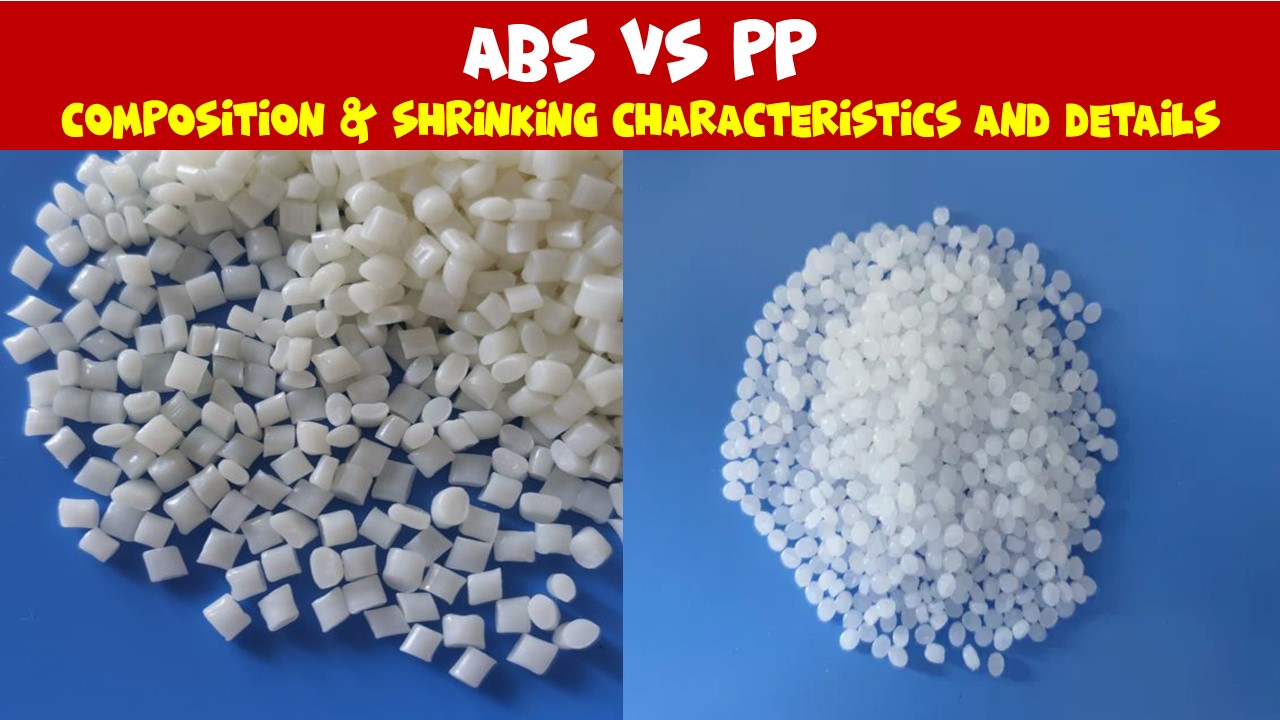Do you know the difference between ABS vs PP? Let’s see comprehensive comparison of ABS (Acrylonitrile Butadiene Styrene) plastic and Polypropylene (PP).
ABS Plastic (Acrylonitrile Butadiene Styrene)
Definition: ABS is a thermoplastic polymer comprised of three distinct monomers: acrylonitrile, butadiene, and styrene. The combination of these monomers imparts ABS with its unique properties.
- Characteristics:
- Acrylonitrile: Provides chemical resistance and rigidity.
- Butadiene: Adds toughness and impact resistance.
- Styrene: Offers a glossy finish and ease of processing.
Applications: Commonly used in applications such as automotive parts, protective headgear, toys (e.g., LEGO bricks), and many housings and covers in consumer electronics.
Polypropylene Plastic (PP)
Definition: PP is a semi-crystalline thermoplastic polymer produced from the polymerization of propylene monomer. It’s one of the most widely used plastics worldwide.
- Characteristics:
- Semi-Crystalline Nature: Provides good chemical resistance and a high melting point relative to other standard plastics.
- Low Density: Results in lightweight characteristics.
- High Tensile Strength: Resistant to cracking and stress, even when flexed.
Applications: Broadly used in various domains, including packaging (containers and films), textiles (ropes, thermal underwear, and carpets), automotive components, reusable containers, laboratory equipment, and many other products.
In essence, while both ABS and PP are versatile thermoplastics, they differ in chemical composition, properties, and suitable applications.
Must Read: HIPS vs PP – Composition & Shrinking Characteristics and Details
Comparison ABS vs PP
| Properties | ABS | PP |
| Mechanical Properties: | Strong, rigid, and has a good balance of toughness and rigidity. It also has a good impact resistance. | Has good tensile strength but is more flexible than ABS. Excellent resistance to fatigue. |
| Thermal Properties | It can withstand temperatures up to 80°C (176°F) for prolonged periods. | It can handle slightly higher temperatures, typically up to 100°C (212°F). |
| Chemical Resistance | Good resistance to many acids and bases but can be affected by solvents. | Outstanding chemical resistance, especially to acids and bases. |
Pros & Cons of ABS vs PP Plastic:
ABS:
PP:
Among ABS vs PP, Which is better and why?:
Determining whether ABS (Acrylonitrile Butadiene Styrene) or PP (Polypropylene) is “better” depends heavily on the specific application and requirements. Both materials have their unique strengths and drawbacks. Let’s break down the properties and applications to clarify:
- Mechanical Properties:
- ABS: Offers a good balance of toughness, rigidity, and strength. It has excellent impact resistance, especially at lower temperatures.
- PP: Generally has a higher tensile strength than ABS but is more flexible. PP is known for its hinge-forming capability due to its excellent resistance to fatigue.
- Thermal Properties:
- ABS: Has a relatively lower melting temperature. Suitable for applications that don’t require high-temperature resistance.
- PP: Exhibits a higher melting point, making it appropriate for applications needing higher thermal resistance, such as microwave-safe containers.
- Chemical Resistance:
- ABS: Resistant to many acids and bases but can be affected by solvents.
- PP: Has outstanding chemical resistance, especially to acids and bases, and is relatively resistant to solvents.
- Aesthetics & Finish:
- ABS: Can be produced in a smooth and glossy finish, making it desirable for visible parts such as consumer electronics casings.
- PP: Typically has a matte finish, unless modified or treated.
- Environmental Impact:
- ABS: Less recyclable compared to PP, especially if it contains other additives.
- PP: More recyclable and commonly recycled for various applications.
- Cost:
- Both materials are widely used and generally cost-effective, but prices can fluctuate based on market demand, production capacities, and other factors. Typically, PP has been more economical than ABS.
Conclusion:
Both ABS and PP are versatile materials, each with its strengths and limitations. Choosing between them requires a clear understanding of the demands of the application in question. Factors such as mechanical requirements, aesthetic considerations, chemical exposure, and the need for UV resistance can influence the decision. Neither is universally superior; instead, their efficacy is context-dependent.

